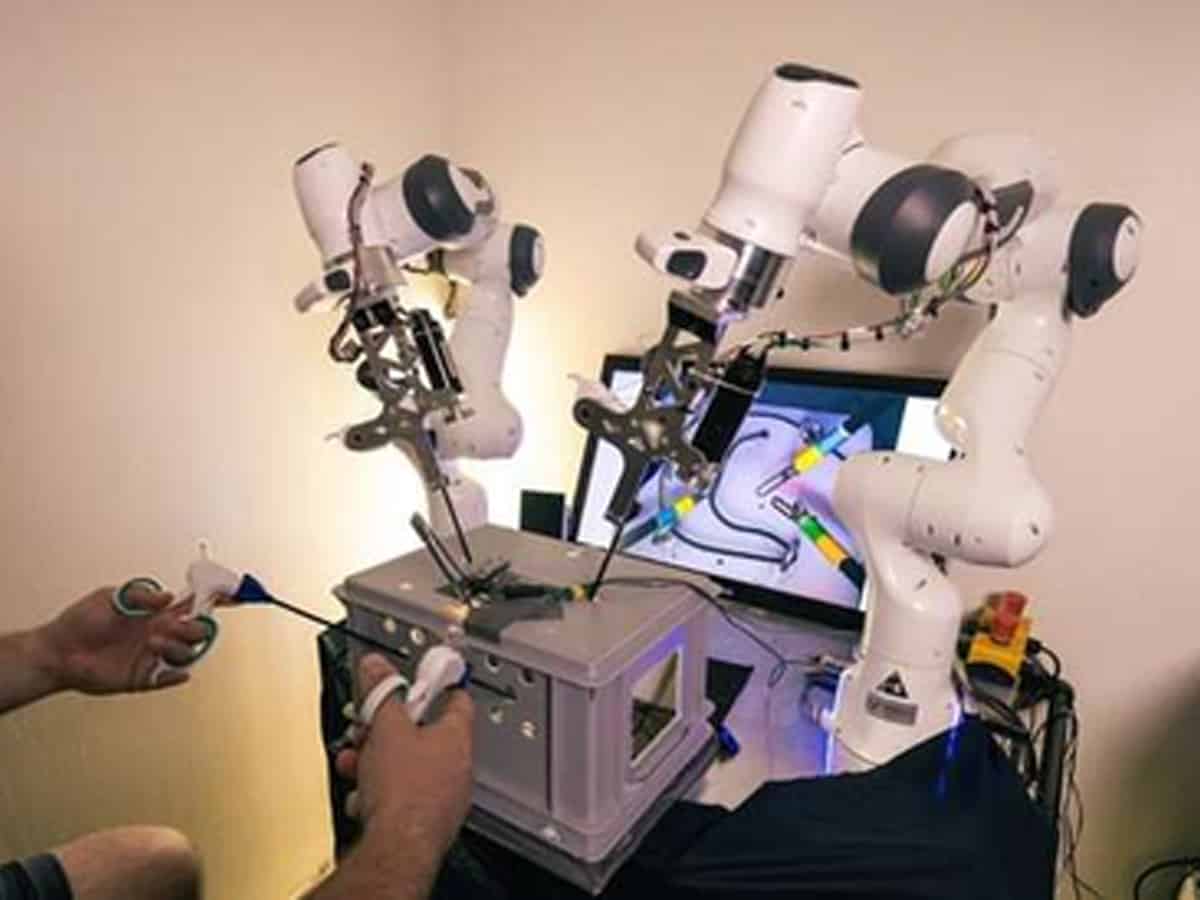
London: Researchers have developed the first system that enables four-arm laparoscopic surgery, reducing surgeon workload while improving precision and safety.
The system, developed by roboticists at Ecole Polytechnique Federale de Lausanne (EPFL) in Switzerland, combines multi-limb manipulation with advanced shared-control augmentation for an unprecedented advance in the field of laparoscopic surgery.
Each hand controls a manipulative instrument, while one foot controls an endoscope/camera, and another foot controls an actuated gripper.
One key innovation of this system lies in the shared control between the surgeon and the robotic assistants. The control framework ensures that the surgeon and robots can work collaboratively within a concurrent workspace while meeting the precision and safety demands of laparoscopic surgery.
“Actuators in the foot pedals give haptic feedback to the user, guiding the foot towards the target as if following an invisible field-of-forces, and also limit force and movement to ensure that erroneous feet movements do not endanger the patient,” said Mohamed Bouri, head of the Rehabilitation and Assistive Robotics (REHAssist) group at EPFL.
“Our system opens up new possibilities for surgeons to perform 4-handed laparoscopic procedures, allowing a single person to do a task that is usually performed by two, sometimes three people,”Bouri added.
Known as shared control, the robotics sometimes lead the surgeon’s control of the instrument as they predict where the surgeon wants to move. When tying a knot for example, the endoscope adjusts into the proper position and the gripper could move out of the way.
To evaluate the system’s ease of use and effectiveness, the team conducted a comprehensive user study with practising surgeons.
The results, published in The International Journal of Robotics Research, confirmed the feasibility of performing four-arm surgical-like tasks without intensive training.
The shared-control strategies implemented in the system were found to reduce task load, improve performance, increase fluency, and enhance coordination during laparoscopic tasks.
“Controlling four arms simultaneously, moreover with one’s feet, is far from routine and can be quite tiring. To reduce the complexity of the control, the robots actively assist the surgeon by coordinating their movements with the surgeon’s through active prediction of the surgeon’s intent and adaptive visual tracking of laparoscopic instruments with the camera. Additionally, assistance is offered for more accurate grasping of the tissues,” said Professor Aude Billard, head of Learning Algorithms and Systems Laboratory (LASA), at EPFL.
“By incorporating foot-controlled robotic assistants and shared control strategies, we reduce the mental and physical load on surgeons and we hypothesise to improve surgical outcomes,” Bouri said.
